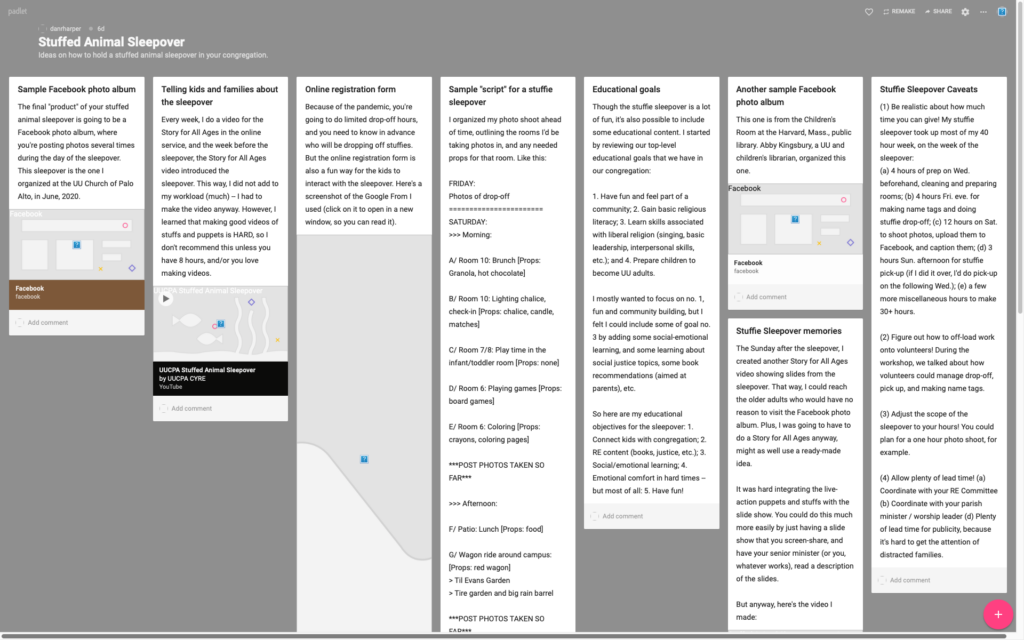In one of the “lightning talks” in today’s session of the Religious Education Association annual meeting, Dr. Eileen Daily of Boston University’s School of Theology posed some questions about how the pandemic is going to change religious education. One of the questions she asked is whether this is an opportunity to reach out to the “nones,” those who are not affiliated with organized religion (remembering that many of the “nones” are “spiritual but not religious”).
A few hours later, I was in a small group conversation with some scholars and practitioners, and we wound up talking about online learning — not surprising given that the pandemic has driven both the academics and those of us working in congregations to doing all our teaching using distance education techniques. I posed the idea that a nonprofit structured like Khan Academy, but devoted to religious education, could be a worthwhile project. Then the conversation moved on….
But I’ve been thinking about that idea since then. What if there were a Khan Academy for online religious education? I could envision three main curricular areas such an entity could address: (1) religious literacy, including resources to introduce young people to the wide variety of religious expression in their community and in the wider world; (2) skills associated with the practice of organized religion including leadership in nonprofit membership organizations (voluntary associations), social justice organizing, group singing, etc.; and (3) building community including building both interpersonal skills (social skills) and intrapersonal skills (self awareness).
I’m leaving out a fourth major curricular area: the kind of “faith formation” that is instruction on how to participate within a specific religious or denominational tradition. Should a nonprofit producing interreligious learning material produce this kind of faith formation? Well, no — if we’re trying to serve the “nones” as well as though affiliated with organized religion, denominational faith formation will not be a central concern. But what if we think big? If this nonprofit is designed from the beginning to scale up (think: Khan Academy), and if this nonprofit builds expertise in delivering online religious education, then when it grows in size and expertise the nonprofit will eventually becomes able to enter into partnerships with various religious groups to produce this kind of faith formation material.
So what are the funding sources for this nonprofit going to be? I think at the beginning, this nonprofit is either going to be the brainchild of someone like Sal Khan, and inspired charismatic leader with the skills to create content and then bring other people into the project — in this first case, the project is self-funded until it gets big enough to scale up — either that, or it could be hosted by a university that has both experts in religious education and some level of IT support (but if such an organization starts in the academy, I would hope that the plan is to quickly spin it off as a separate nonprofit). Then as the nonprofit grows, because it’s not tied to a specific religious organization, I would expect that a substantial part of the funding would be grants from philanthropic organizations. And why not target Big Tech for grants? — using research that shows that religious literacy can reduce religious bullying and religious violence, you could make a pretty compelling case that this kind of education is important and worth funding.
I’m sure others have already come up with the same idea. And who knows, maybe there’s already such an organization out there….








